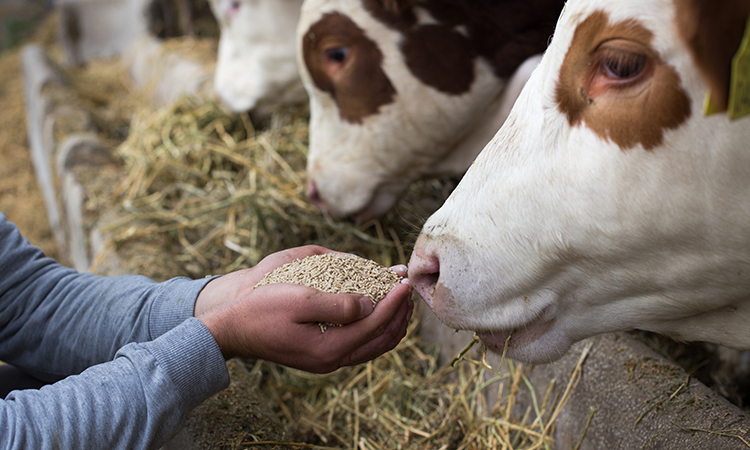Food tribes must find common ground to solve hunger and climate change
- Like
- Digg
- Del
- Tumblr
- VKontakte
- Buffer
- Love This
- Odnoklassniki
- Meneame
- Blogger
- Amazon
- Yahoo Mail
- Gmail
- AOL
- Newsvine
- HackerNews
- Evernote
- MySpace
- Mail.ru
- Viadeo
- Line
- Comments
- Yummly
- SMS
- Viber
- Telegram
- Subscribe
- Skype
- Facebook Messenger
- Kakao
- LiveJournal
- Yammer
- Edgar
- Fintel
- Mix
- Instapaper
- Copy Link
Posted: 5 April 2021 | Carel du Marchie Sarvaas | No comments yet
Carel du Marchie Sarvaas explains why improving animal health and well-being is central to preventing malnutrition in humans and will make the global food supply more sustainable.


Healthy animals are central to the global food supply according to Carel du Marchie Sarvaas
Divisions over what makes a healthy, sustainable diet are so entrenched it is easy to assume that ‘food tribes’ – from the plant-based movement to the committed carnivores – have nothing in common.
It is of little surprise then that even the UN’s Special Envoy to the 2021 Food Systems Summit recently referred to the debate over the role of diets in reducing emissions as “polarised”.
But this increasing and counterproductive polarisation is only perpetuating global hunger and climate change by preventing progress on both.
If this year’s UN Food Systems Summit is to truly bring about a systemic transformation, then all sides will need to find common ground to gain ground. It may not be obvious, but the starting point for a healthier planet and population should be a universal commitment to improve animal health.
A potential solution to malnutrition
The Summit – and society – rightly challenges all sectors, including agriculture, to find new ways to reduce environmental impact in the decade ahead. Otherwise, we risk irreparable harm to our climate and planet.
But it must also confront the fact that too many people worldwide (including 144 million children) are malnourished; lacking the necessary protein and micronutrients needed for a healthy diet – nutrients that is readily provided by meat, milk and eggs.
There is broad consensus that animal protein will remain a key part of global food systems for decades to come, with falling consumption in some parts replaced by a projected increase in low-income countries as populations rise and prosper.
So while there may not be a single, sustainable and global solution that resolves the diets of everyone worldwide, there are game-changing solutions that offer progress on both counts by improving the health of animals.
Don’t waste spent emissions
In regions like the US and Europe, where the environmental impact of livestock is a greater consideration than the nutritional deficits of the population, better animal health offers a way to reduce agriculture’s carbon footprint while still meeting demand. Healthier animals need less feed, water and medicines, while protecting animals against disease can prevent losses and reduce the emissions cost of production.
For example, the recent outbreak of African Swine Fever, a deadly and contagious pig disease, led to the culling or loss of an estimated 150 million animals, representing up to 45 million tonnes of greenhouse gases invested in production that did not ultimately reach the food supply chain.
The UN has estimated that new technologies that improve animal health could help reduce livestock emissions by almost a third, making investments in new vaccines, diagnostics and treatment essential for the sustainability of the sector. Work is ongoing to deliver the breakthrough African Swine Fever vaccine that would protect pigs, prevent losses and reduce unnecessary emissions.
Meanwhile, in regions across the Global South, that contribute far less to worldwide emissions yet continue to face high levels of malnutrition, healthier animals can help provide more nutritionally valuable food to improve diets and reduce illness among people.
An egg a day can provide young children with the choline, vitamins and fatty acids needed to support healthy development, yet the supply of eggs is dependent on healthy chickens.
Conversely, animal diseases can reduce availability and increase the cost of nutritious foods. For example, an outbreak of avian influenza in Mexico in 2012 led to a shortage of eggs that drove up prices by 82 percent, with the inflated prices lasting for three years.


Eggs are a great source of nutrition, but outbreaks of disease can drive prices up
A crowd-pleasing centrepiece to the Summit?
Initiatives and partnerships that help to expand veterinary services in developing countries can improve the prospects of millions by improving the health of animals.
Moreover, improvements in animal health can help achieve this increased productivity without causing a rise in environmental costs to low-income countries. For example, research indicates higher methane emissions from livestock in developing countries is linked to an insufficient diet or digestibility of feed.
The implication is that initiatives and partnerships that improve the availability and quality of feed for livestock in developing countries will support both greater productivity and sustainability.
The premise of the Food Systems Summit this year is to find appropriate, game-changing solutions for different contexts that deliver across five target areas for action. Whether the issue is agricultural emissions in Europe or malnutrition in sub-Saharan Africa, there is no scenario in which healthier animals do not offer revolutionary benefits to people and the planet.
As the Summit brings everyone from all walks of life to the table, perhaps improving animal health and well-being can be the crowd-pleasing centrepiece.
About the author
Carel du Marchie Sarvaas is the executive director for the global animal medicines association, HealthforAnimals, which represents the nine largest animal medicines companies.
Related topics
Environment, Food Safety, Food Security, Health & Nutrition, Regulation & Legislation, retail, Supply chain, Sustainability, The consumer








